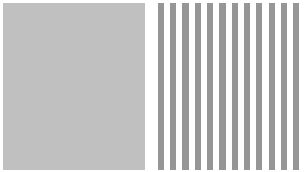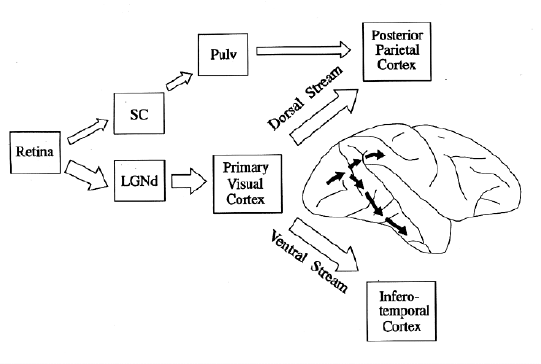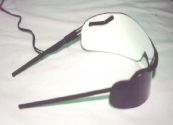Joe Lau's wiki: Main/Neural Correlates Of Consciousness
Readings
- [Required] Chalmers, David. (2000). What is a Neural Correlate of Consciousness? In T. Metzinger (Ed.) Neural Correlates of Consciousness: Empirical and Conceptual Questions Cambridge: MIT Press.
- [Required] Block, Ned. (2001). Paradox and Cross Purposes in Recent Work on Consciousness. Cognition, 79, 1-2, April 2001, 197-219. [The HKU Library has an electronic subscription] Also in Dehaene et. el (Eds.) (2001). The Cognitive Neuroscience of Consciousness Cambridge: MIT Press.
- Milner and Goodale (1998). The Visual Brain in Action. PSYCHE, 4(12), October 1998. http://psyche.cs.monash.edu.au/v4/psyche-4-12-milner.html
- Kentridge RW, Heywood CA, Weiskrantz L. (1999). Attention without awareness in blindsight. Proc Biol Sci. Sep 7, 266(1430), 1805-11.
- Blindsight
Studies on neural correlates of consciousness
Functional brain areas in humans
- Logothetis (1998) - Binocular rivalry in moneys, single cell recordings, 90% correlation in inferotemporal cortex.
@ ... cells in primary visual cortex (V1) don't correlate well: when the monkey is stimulated with horizontal and vertical gratings but "sees" horizontal, a large number of "vertical" cells in V1 fire, as well as "horizontal" cells. At this point, most cells seem to correlate with retinal stimulus, not with visual percept. But further into the visual system, the correlation increases, until in inferior temporal cortex, there is a very strong correlation. - Chalmers@
- Epstein and Kanwisher (1998) - parahippocampal place area (PPA) responds strongly to images of places including houses, weakly to non-place stimuli, not faces.
 Binocular rivalry study for face-house stimulus.
Binocular rivalry study for face-house stimulus.- Tong, Nakayama, Vaughan, Kanwisher (1998). Binocular Rivalry and Visual Awareness in Human Extrastriate Cortex. Neuron, 21, 753-59.
- Tong, Nakayama, Vaughn, and Kanwisher (1998) - fMRI fusiform face area (FFA) responds twice as strongly to faces than non-face objects (But de Gelder & Kanwisher (1999) - patient without FFA can perceive faces as faces but impaired at identifying individual faces)
- Culham et el (1999), He Cohen and Hu (1998) - Awareness of motion correlates with activity in MT/MST (medial temporal cortex/medial superior temporal cortex). Goebel, Khorram-Sefat, Muckli, hacker, & singer (1998) - mental imagery of motion.
- Grill-Spector, Kushnir, Itzchak, and Malach (2000) - Object recognition success correlates with activity in LOC (lateral occipital complex).
- Lau, Rogers, Haggard, Passingham (2004) - pre-SMA (pre-supplementary motor area) activity with attention to motor intention. Science, Vol 303, Issue 5661, 1208-1210. doi:10.1126/science.1090973
Definition of NCC
Koch, C. and Crick, F. (2001). The neural basis of consciousness. Intl. Encyclopedia of the Social & Behavioral Sciences Elsevier, 2600-2604.
@The NCC is the minimal (minimal, since it is known that the entire brain is sufficient to give rise to consciousness) set of neurons, most likely distributed throughout certain cortical and subcortical areas, whose firing directly correlates with the perception of the subject at the time.@
Comments
- Here direct correlation is supposed to mean only sufficiency. X direct correlates with Y = X is sufficient for Y (in normal human beings).
- The idea of minimal sufficiency is meant to rule out irrelevant brain processes, or brain processes that are common to many different conscious phenomena. If A is sufficient for B, then (A+C) is also sufficient for B.
- So here is the official definition: X is the NC of conscious experience Y = X is the minimal condition that is sufficient for Y.
- Why should we not require that X is necessary for Y if X is the NC of Y? Chalmer's answer:
@This is an attractive requirement for an NCC, but it is arguably too strong. It might turn out that there is more than one neural correlate of a given conscious state. For example, it may be there there are two systems, M and N, such that a certain state of M suffices for being in pain and a certain state of N also suffices for being in pain, where these two states are not themselves always correlated. In this case, it seems that we would likely say that both M and N (or their corresponding states) are neural correlates of pain.@
But can we say in such cases that the NCC is (M or N)?
 PBS Power of half
PBS Power of half- Different types of experiences will have different NCCs. So far studies on NCCs of visual experience have been more extensive.
- Correlation is not identity. Finding NCCs in human might not explain consciousness in general.
Unconscious perception
One way to identify NCC is to eliminate representations that correlate with unconscious perception.

- Tootell, Hadjikhani, and Somers (1999) - uniform gray field alternates with visual gratings of same luminance. Subjects report uniform field but V1, V2, V3, VP, V3A, V4v respons more strongly to invisible gratings.
- High level perception - Whalen et el (1998) - Amygdala activation by masked angry faces vs happy faces.
- Luck, Vogel, and Shapiro (1996) - N400 ERP shows semantic processing without awareness.
- Dehaene et el (1998) - Preparation of a motor response that depends on the analysis of a masked stimulus.
Ventral and dorsal stream


Ungerleider and Mishkin (1982) brain-lesioned monkeys
- Ventral stream : what pathway (object recognition)
- Dorsal stream : where pathway (location and movement for action)
Milner and Goodale (1995) See http://psyche.cs.monash.edu.au/v4/psyche-4-12-milner.html
- Ventral stream : conscious pathway
- Dorsal stream : unconscious pathway
Kanwisher's proposal for NCC for visual experience
NCC for visual consciousness has three components:
- Representation - representation of perceptual features (e.g. "red", "line")
- Location - the representations are in the ventral stream
- Binding - binding in parietal lobe of features into a representation of a spatial-temporal token ("red line on the left now")
Discussion

- Visual awareness of motion seems to correlate with activity in area MT, which is along the dorsal pathway.
- Ned Block: Perhaps it is possible to have unbound conscious experiences. (ganzfeld experience)
- Ned Block: Perhaps it is possible to have binding in the blind field.
- Ned Block: Perhaps it is attention that produced consciousness (and binding), and so binding is not sufficient for consciousness. (spatial attention often linked to the parietal lobe)
Replies
- Perhaps the NC is higher up in the visual hierarchy? There are neural connections between the ventral and dorsal streams.
- In the Ganzfeld case, there might be no depth information but there is still binding of color with spatial coordinates in the coronal plane.
- Perhaps. Blindsight patient GY can guess correctly the emotion expressed by a face in the blind field (happy/sad/angry/fearful) - DeGelder, Vroomen, Pourtois & Weiskrantz (1999).
- But attention to blindfield not sufficient for conscious perception. (See Kentridge, Heywood, Weiskrantz (1999).) Block: "Perhaps the attention in the blind field is too low for X."
How is consciousness related to atention?
Is attention necessary or sufficient for consciousness?